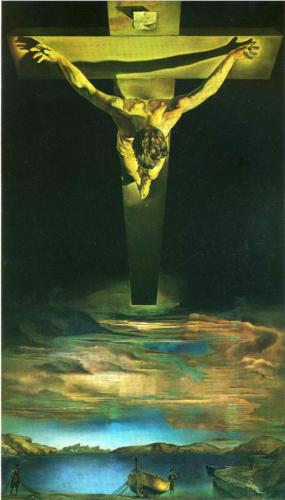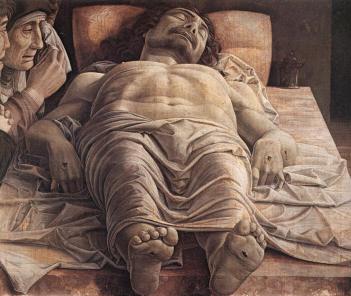Arguably the single most recognizable image of a death is that of Christ on the cross. The range of ways in which Christ’s death has been depicted is vast; styles vary from realistic and literal to abstract and imagined, taking shape in sculpture, painting, drawing, woodwork and much more (not to mention these coat hangers).
In some depictions, the image of death shows Christ bloodied and suffering while in others, he appears pristine and tranquil. In some, he is surrounded by mourners, onlookers and hecklers; others place him alone or in an entirely unrelated locale. Dali famously brought the classic scene to one of his signature surrealist environments — and he is not the only prominent artist to artistically recreate the scene of Jesus’ death.
Christ on the cross is among the most easily-recognized symbols across country and cultural lines, known nearly worldwide. The image is rife with meaning and significance. For many, of course, Christ on the cross is a religiously-affiliated image representative of unconditional love and a self-sacrifice so complete, that it could bring the salvation of the world and its humanity.
However, one needn’t identify with the Christian faith to have strong associations with this image. Many simply acknowledge Jesus Christ as an evolved, realized being — and therefore, his death is similarly substantial and momentous and worthy of artistic representation.
“However, one needn’t identify with the Christian faith to have strong associations with this image”
The image itself is very clearly that of a man dying, but that is not the reason it has endured so long and been recreated so often. It has longevity because most of us assign a significance beyond death to the image. Christ on the cross serves as our society’s most common and enduring image of death and dying, allowing us to recognize our ability to associate a death with much more than just loss.
Related Links:

 An Enduring Image of Death: Christ on the Cross
An Enduring Image of Death: Christ on the Cross




 Recovering Cremation Remains After the Los Angeles Fires
Recovering Cremation Remains After the Los Angeles Fires
 “As Tears Go By” by Marianne Faithfull
“As Tears Go By” by Marianne Faithfull
 “The Sea” by John Banville
“The Sea” by John Banville














